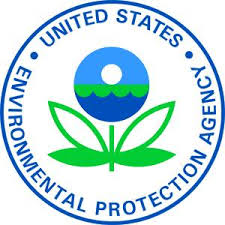EPA Issues Final Standards for Heavy-Duty Vehicles
WASHINGTON (Dec. 20, 2022) – Today, the U.S. Environmental Protection Agency (EPA) finalized the strongest-ever national clean air standards to cut smog- and soot-forming emissions from heavy-duty trucks beginning with model year 2027. The new standards, which is the first update to clean air standards for heavy duty trucks in more than 20 years, are more than 80% stronger than current standards.

This final rulemaking is the latest step toward implementing the historic Clean Truck Plan, which is moving America’s highly polluting heavy-duty trucking fleet towards low-carbon and electric technologies. Additionally, historic investments from President Biden’s Inflation Reduction Act and Bipartisan Infrastructure Law are accelerating innovation in zero-emissions truck technology, expanding access to clean school and transit buses, and training workers to install and maintain charging infrastructure.
“EPA is taking significant action to protect public health, especially the health of 72 million people living near truck freight routes in America, including our most vulnerable populations in historically overburdened communities,” said EPA Administrator Michael S. Regan. “But we’re not stopping there. This is just the first action under EPA’s Clean Trucks Plan to pave the way toward a zero-emission future. These rigorous standards, coupled with historic investments from the Inflation Reduction Act and the Bipartisan Infrastructure Law, will accelerate President Biden’s ambitious agenda to overhaul the nation’s trucking fleet, deliver cleaner air, and protect people and the planet.”
The final standards will reduce deadly smog and soot from new heavy-duty trucks starting with Model Year 2027. EPA estimates that by 2045, the rule will result in the following annual public health benefits:
- Up to 2,900 fewer premature deaths
- 6,700 fewer hospital admissions and emergency department visits
- 18,000 fewer cases of childhood asthma
- 3.1 million fewer cases of asthma symptoms and allergic rhinitis symptoms
- 78,000 fewer lost days of work
- 1.1 million fewer lost school days for children
- $29 billion in annual net benefits
Relative to current rules, the new standards are more than 80% stronger, increase useful life of governed vehicles by 1.5–2.5 times, and will yield emissions warranties that are 2.8–4.5 times longer. This final rule includes provisions for longer useful life and warranty periods. These provisions guarantee that as target vehicles age, they will continue to meet EPA’s more stringent emissions standards for a longer period of time. The rule also requires manufacturers to better ensure that vehicle engines and emission control systems work properly on the road. For example, manufacturers must demonstrate that engines are designed to prevent vehicle drivers from tampering with emission controls by limiting tamper-prone access to electronic pollution controls.
This rulemaking is based on a robust, complete technical record consistent with the authority set forth in the Clean Air Act. EPA engaged a wide variety of stakeholders, including impacted communities, Tribal, state and local governments, industry leaders, environmental organizations, environmental justice organizations, labor groups, and others to develop final standards that are as strong as possible, take effect as soon as possible and will last as long as possible.
Accelerating a Zero Emissions Future
Today’s announcement is the first of three major actions being taken under EPA’s Clean Trucks Plan. In the coming months, EPA intends to release the proposals for the remaining two steps in the Clean Trucks Plan. These include the proposed “Phase 3” greenhouse gas (GHG) standards for heavy-duty vehicles beginning in Model Year 2027, as well as the proposed multipollutant standards for light- and medium-duty vehicles beginning in Model Year 2027. These additional rulemakings will consider recent Congressional action, including historic resources for electrification from the Inflation Reduction Act and the Bipartisan Infrastructure Law that EPA anticipates will lead to swift adoption of zero-emission vehicle technologies. Taken together, these rulemakings will put in place stringent long-term standards that will reduce dangerous smog, soot, and climate pollution from heavy-duty vehicles.
Now that the Agency has taken this final action on reducing NOx emissions nationally from Heavy-Duty trucks, EPA will complete the assessment of the technical and legal record before the Agency and prioritize issuing decisions on the three pending Heavy-Duty program waiver requests from the State of California in early 2023.
Learn more information on the Heavy-Duty NOx rule.
Learn more information on the rest of the Clean Trucks Plan




